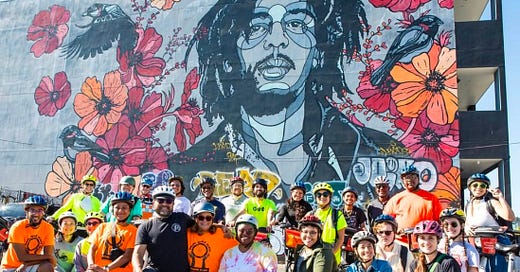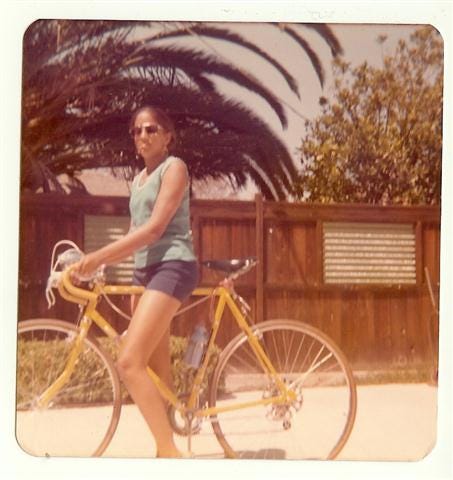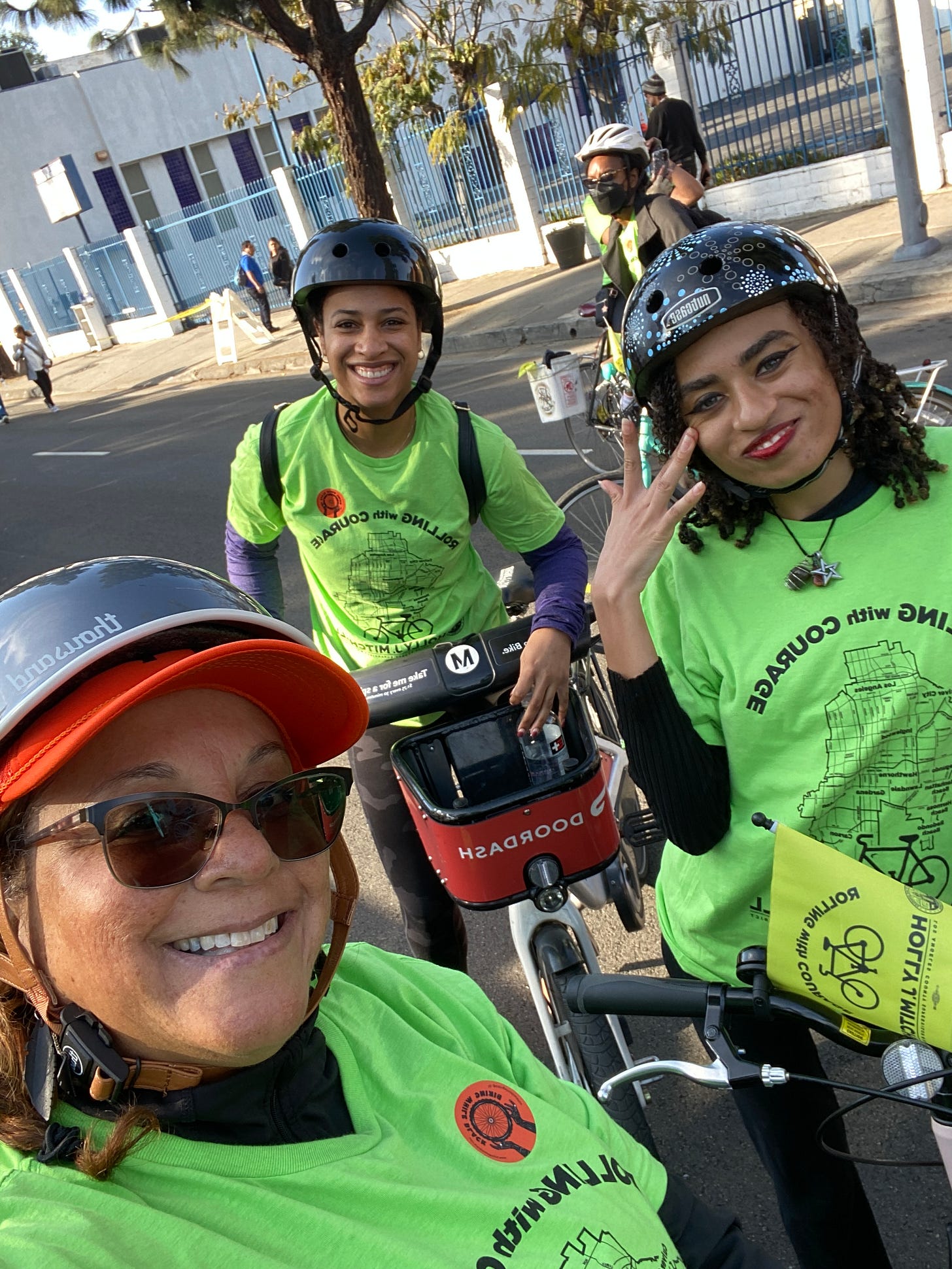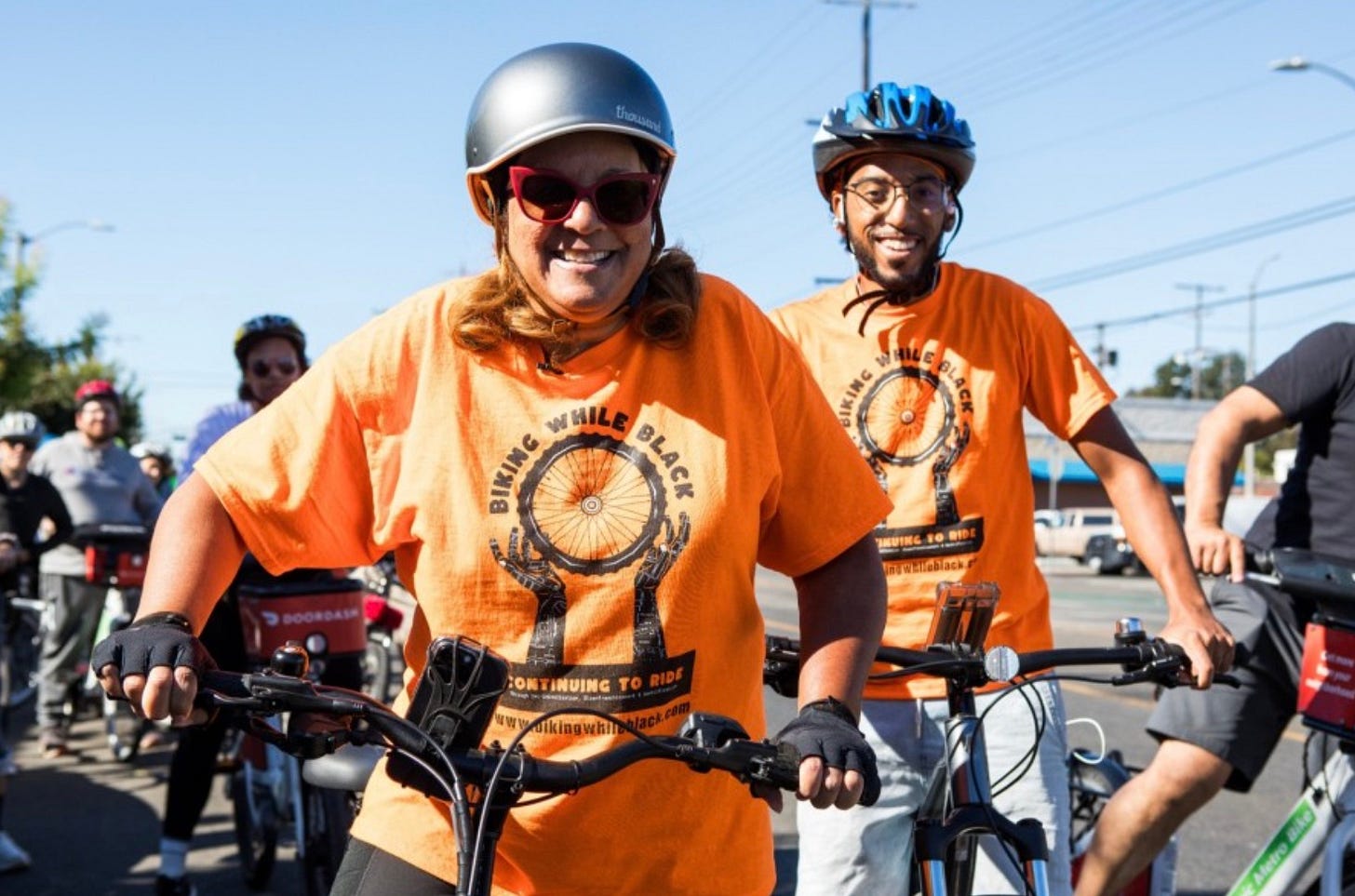Happy Earth Day Friends of Biking While Black!
As you probably noticed, we’re coming to you in a different forum. We’re moving our regular communications over to the Substack platform. This will allow us not just to update you on what’s happening and the events we’re participating in, but to also engage in deeper discussions around mobility justice. This ability to engage more deeply in advocacy is all a part of our vision to grow the Biking While Black movement. We’re excited that you’re along for the ride with us here and we encourage you to share this with your friends and community. This isn’t just about sharing what’s going on in our hometown of LA, but about what’s happening all across our country (and even the world!) around mobility justice.
As such, it feels appropriate to launch this new evolution of our communications on Earth Day!
I’ll be frank, though, Earth Day has not always actively involved or been about Black people or people of color. Environmentalist and author of The Intersectional Environmentalist, Leah Thomas noted in a 2022 Elle article that the organizers of the very first Earth Day and the beginning of their efforts involved very few people of color despite the fact that communities of color are disproportionately affected by environmental hazards. In fact, a 1987 study found that three-fifths of Black and Latinx people lived near toxic waste dumping sites. “However,” Thomas writes, “this call for ensuring people of color and low income communities didn’t bear the brunt of environmental hazards didn’t gain nearly as widespread support as the original Earth Day movement.”
Growing up in the '60s and '70s, conversations about environmental justice or Earth Day simply didn’t exist in my household or community. It wasn’t until I began my advocacy work about 15 years ago that I started connecting the dots—realizing how the industrial plants, uncollected trash, and lack of trees and green spaces and lack of sanitation in Black and BIPOC neighborhoods like mine were all part of a much larger pattern of environmental injustice.
From my perspective, Earth Day and environmental justice can't only be celebrated in rainforests, national parks, or pristine green spaces. They must also be rooted in our neighborhoods—especially in communities of color that have long been deprived of clean air, safe streets, and basic environmental dignity. These are the places where environmental injustices are often most visible, on every corner.
To truly honor Earth Day, we need deeper, more honest conversations that decolonize its meaning and connect it to the lived realities of people in marginalized communities. We need city agencies and environmental activists to intentionally bridge this gap, making space for narratives and solutions led by Black and BIPOC advocates.
That’s how we begin to grow a movement that reflects everyone’s experience—and co-create an Earth Day that truly works for all of us.
And that’s exactly why we’re here. Biking While Black is rooted in a deep understanding of how the colonized structuring of race—and the oppression that comes with it—has confined our lives and communities within deliberately designed boundaries. These limitations have shaped not just our opportunities, but the very streets we move through.
And yet, across generations, Black lineages have continued to resist, to rise, and to reclaim space. We've created moments of joyful movement—on bikes, on foot, in community—that defy those boundaries. Moments that bring people together and spark the kind of change our communities deserve.
So happy Earth Day community! Enjoy this day and let’s continue to keep up the fight!
In community,
Yolanda Davis-Overstreet







